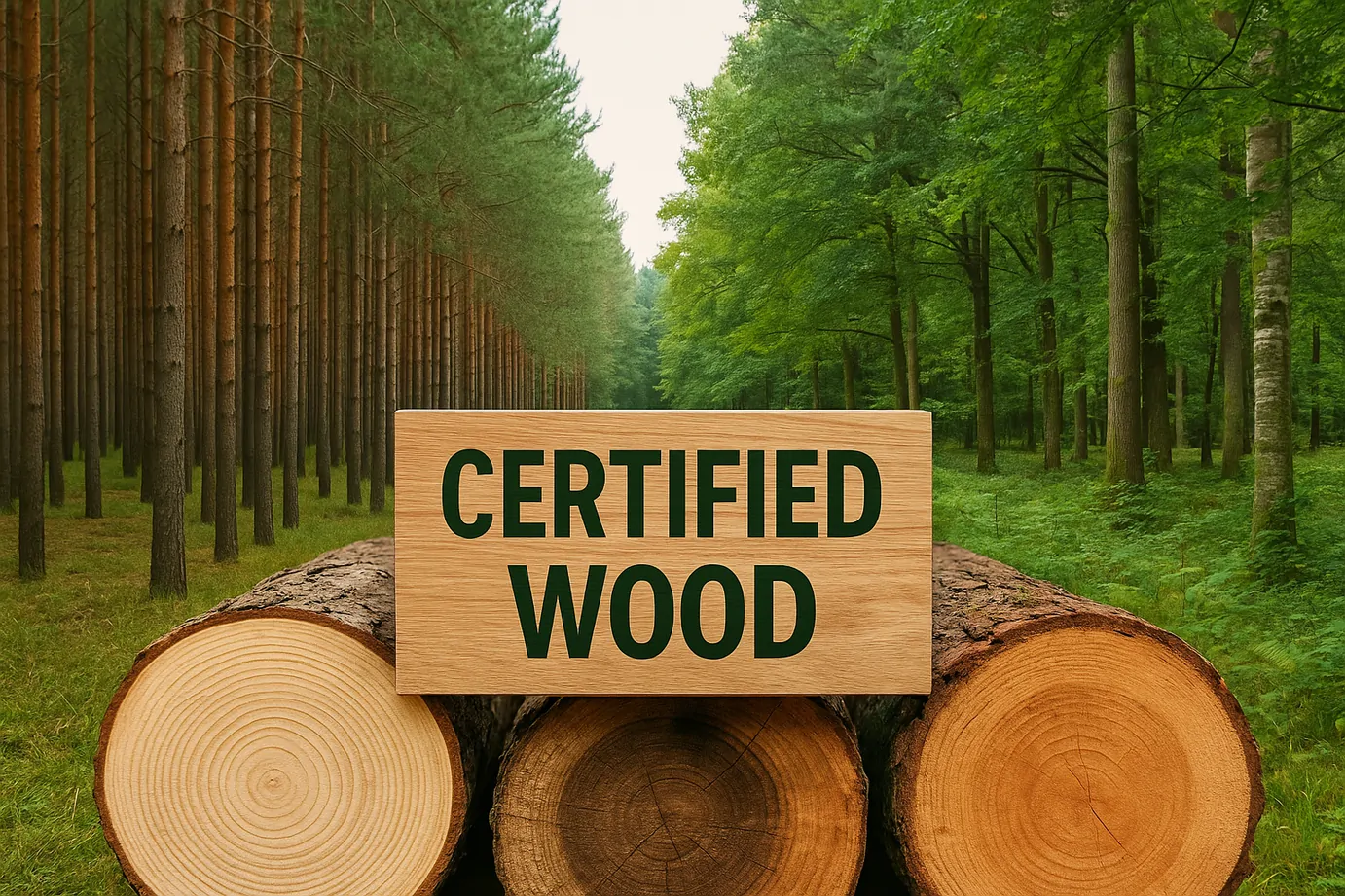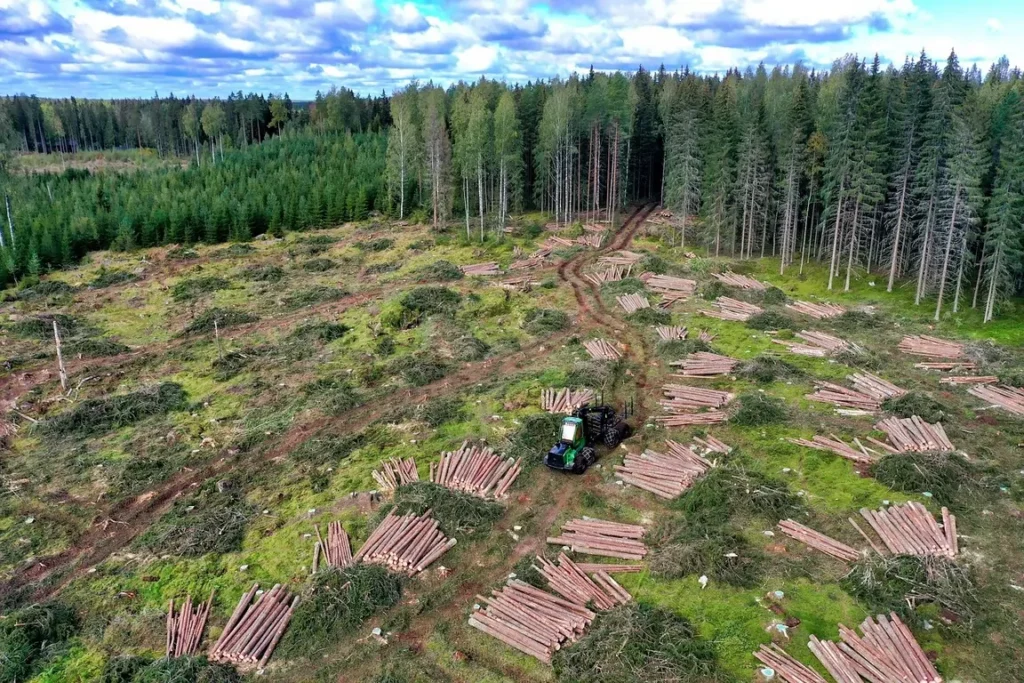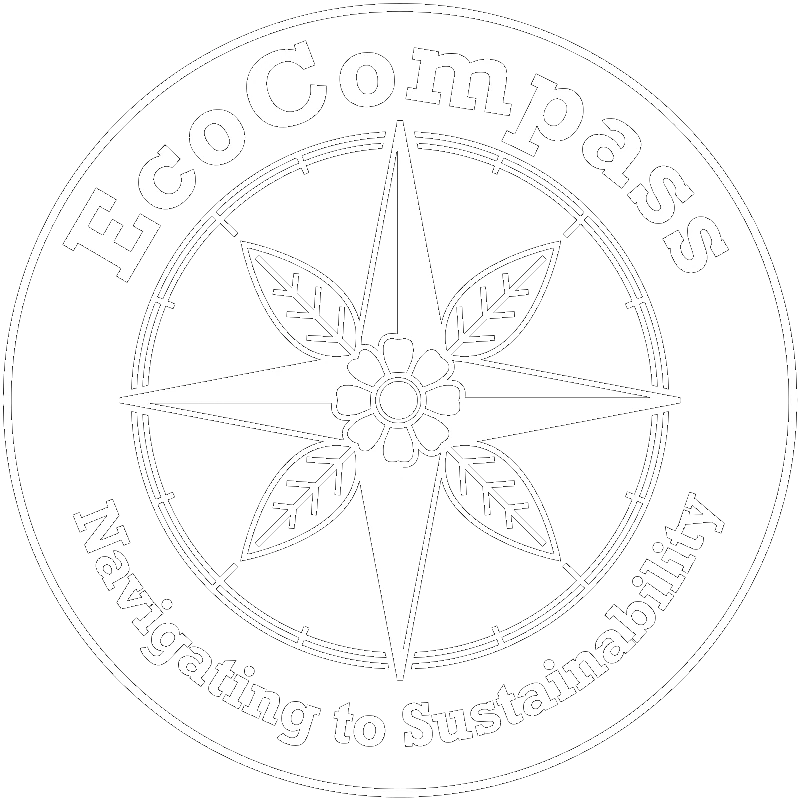
Wood and wood products can be beautiful, pleasant, useful, and sustainable… or not.
Between two pieces of furniture, a pack of office paper, or a roll of toilet paper, there can be a big difference:
One comes from legal harvesting in a sustainably managed forest where nature and its laws are respected, and where there’s enough space left for local communities and the forest’s other residents—biodiversity.
The other comes from illegal logging, where trees disappear faster than satellite images can track, or even from legal operations that, in reality, are more like plantations focused purely on raw material production. Essentially, an industry built around wood production.
Instead of just choosing wood that looks good, today’s conscious consumers look for signs of responsible forestry. Sustainable wood certification plays a crucial role in ensuring that the wood and forest products we use are sourced without harming the planet. This is where the most well-known certification systems come in: FSC (Forest Stewardship Council), PEFC (Programme for the Endorsement of Forest Certification), and SFI (Sustainable Forestry Initiative). These certifications aim to ensure that products come from forests managed according to specific environmental, social, and economic criteria. But be careful—not all certificates are equal, and they don’t always mean the same thing everywhere.
FSC: A Strong Voice for the Public and the Environment
FSC is an international nonprofit founded in 1993 in response to concerns about deforestation and unfair forest management. Organizations like WWF—and initially Greenpeace—were behind the project, seeking a way to ensure long-term forest protection while enabling responsible resource use. It’s widely considered the strictest and most environmentally focused certification system.
A key feature of FSC is its three-chamber governance structure—environmental groups, social interests (such as local community and worker rights), and economic interests (foresters, landowners, processors) all have equal say. This balance means the rules and compliance monitoring are strongly influenced by the public and independent organizations, not just forestry companies. FSC is recognized for its high independence and transparency.
On paper—and often in practice—FSC has ambitious standards:
- relatively high biodiversity protection,
- respect for Indigenous rights,
- strict limits on chemicals and GMOs,
- support for transparent decision-making.
That’s why FSC is often called the “gold standard” of forest certification, supported by many environmental and consumer organizations.
But FSC isn’t flawless:
For example, in 2018, Greenpeace withdrew from FSC, calling it a system with strong foundations but one that doesn’t always prevent greenwashing—marketing that pretends to be “green” without real substance (more details here).
It’s also worth noting that a recent study published in The Guardian found that nearly half of the tested wood samples labeled as FSC or PEFC sometimes came from regions other than those listed in the documentation (including imports from Russia and Belarus during the embargo).
Despite Greenpeace’s departure, WWF and other organizations still view FSC as the most trustworthy international standard. But like any large system, it requires continuous improvement and independent oversight. The level of compliance, of course, depends on the entities responsible for monitoring in each country or region.
PEFC: The Landowners’ and Forestry Sector’s Certification
At first glance, PEFC (Programme for the Endorsement of Forest Certification) might seem like FSC’s simpler sibling.
It was created in 1999 as an initiative by small and medium forest owners in Europe who felt that FSC standards were too costly and difficult to implement. It was essentially a response to the needs of small landowners and the forestry industry, who saw FSC as too complex and demanding. Although it originated in Europe, PEFC now has certification systems and partnerships across many regions, including North and South America, Asia, Oceania, and Africa.
PEFC is more decentralized and works with national standards, allowing better adaptation to local conditions. However, in practice, this means that forest owners and the forestry sector have the main voice in setting rules and monitoring. The involvement of environmental and public organizations is limited and less prominent than with FSC, leading to ongoing debates about the actual level of environmental protection in PEFC-certified systems.
In individual countries, criteria can vary. While many national systems are high-quality, others may set much looser requirements, and local forest managers sometimes adjust PEFC criteria to merely copy existing national norms, meaning PEFC doesn’t always add significant value compared to standard forest management practices.
For example, Greenpeace has long criticized PEFC as a system that certifies forests but doesn’t ensure their true protection (more details here). Other organizations (such as WWF and others) also express criticism. In regions where both PEFC- and FSC-certified products are available, consumers need to ask themselves: Do I trust this particular manufacturer or forest manager? Is their communication transparent, and are their practices broadly regarded as high-quality?
PEFC isn’t automatically a bad choice—but it’s not a guarantee of high standards either. Its quality and significance strongly depend on local conditions, and in some countries, PEFC is set to genuinely strict and high-quality standards.
SFI: The American Model Going Its Own Way
SFI (Sustainable Forestry Initiative) is a certificate most European consumers will probably never see. SFI operates mainly in North America and was created in the 1990s as an initiative of the timber industry. Since 2005, SFI has been fully recognized within PEFC as its North American partner, so in global comparisons, it’s often listed under the PEFC framework, even though it has its own name and identity in the local market (more here).
Although over time it has opened up to cooperation with independent experts, SFI remains strongly tied to industry, and its rules and control mechanisms are less independent than those of FSC.
In the U.S. and Canada, however, it’s widespread—covering millions of hectares and closely linked to the timber industry.
That’s both its strength and its weakness.
SFI supports environmental education, research, and community activities. On the other hand, it has long faced criticism from various environmental and professional organizations pointing to its close ties with the timber industry and potential conflicts of interest (more details here or here). Some call it a “business-as-usual” certificate that allows harmful forest practices to continue under the guise of sustainability.
Following waves of criticism, the system has undergone several reforms, but in global comparisons, it’s still considered less demanding.
What Should the Everyday Consumer Take Away?

It’s not simple. While wood is generally considered a renewable and therefore sustainable resource, that’s not always the case. When choosing certification, various factors come into play: environmental ambition, focus on social aspects, landowner needs, and the market’s practical demands. FSC offers the greatest independence and public voice, PEFC reflects landowners’ interests and local specifics, and SFI primarily serves the needs of North American industry.
In all cases, remember:
While we often talk about certified wood, these certifications also cover other forest products—such as resin, fruits, mushrooms, decorative materials, or even services like ecotourism.
All three certifications have systems to certify entire supply chains—“from forest to store”—and if a manufacturer (such as a furniture, paper, or packaging producer) wants to use certification logos on products, their entire chain must be properly certified.
Not everyone has the time or desire to analyze certification processes. Not everything with a green leaf on the label is automatically eco-friendly. Certifications can be an excellent guide—but only if we understand their meaning, differences, and limitations.
So, it’s worth knowing:
- FSC is today widely regarded as the most trustworthy and strict global standard. If you find a product with this label, it’s highly likely that it underwent stricter evaluation.
- PEFC has a broad reach and often represents a more realistic option for local businesses or smaller landowners. But its quality depends mainly on the specific national system and the producer’s transparency.
- SFI, in turn, is a system tailored to North America—useful in many ways but considered less demanding in international comparisons. In principle, it shares similar “weaknesses” as PEFC.
And above all—no certification is a guarantee of perfection. But it’s a tool. And like any tool, its effectiveness depends on how we use it and what we know about it.
That’s why it’s important not only to trust but also to think critically, ask questions, and stay informed. Not to look for faults, but to become an active part of the solution.
At EcoCompass, we cover more topics too—from choosing responsible materials to eco-labels and new technologies that can help the planet. Stay with us to make smart choices—not just based on the color of the packaging.
